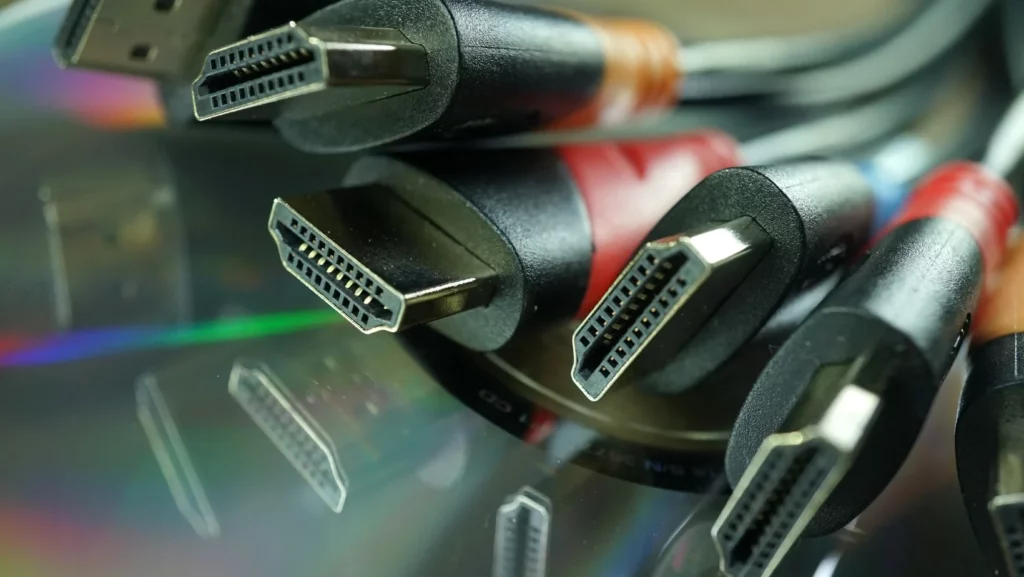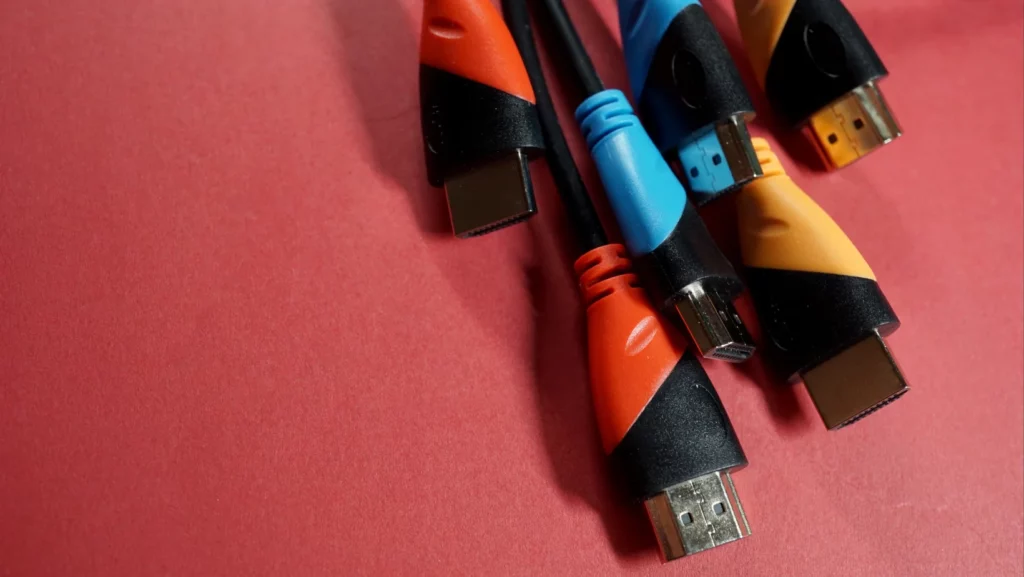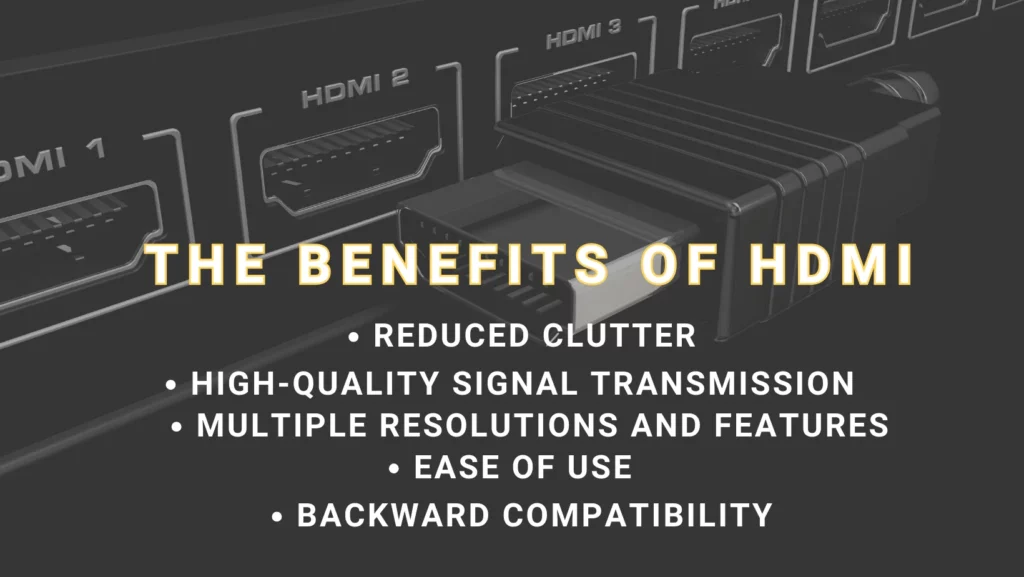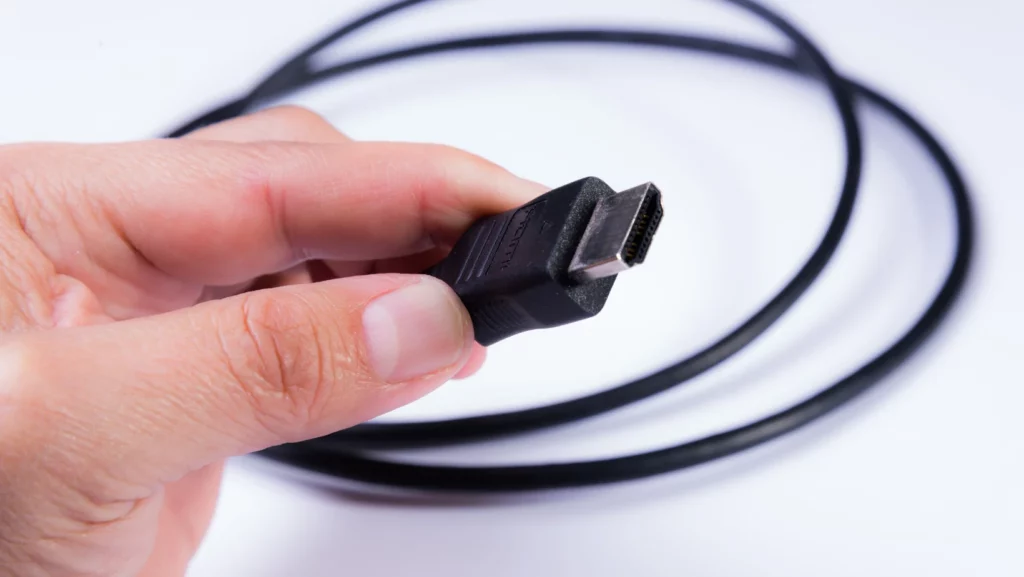If you are a tech-savvy individual, you have probably come across the term HDMI. It is commonly used in today’s digital devices such as televisions, projectors, and gaming consoles. But do you really understand what it is and why it’s important? In this article, we will delve into the world of HDMI and explore its inner workings. We will also discuss its benefits and why it has become a crucial component in the digital world.
Are you someone who is constantly surrounded by technology?
HDMI is a digital interface used to transmit high-quality audio and video signals from one device to another, without any loss in quality. Before HDMI, there were other methods of connecting devices such as VGA and RCA cables, but they were limited in terms of resolution and capability.
With HDMI, you can easily connect your devices and experience high-definition content at its best. It has become the standard for connecting digital devices and has replaced older analog methods. Let us help you understand how it works and why it’s important.
Read on and discover the magic behind HDMI!
What is HDMI?

HDMI stands for High-Definition Multimedia Interface. It is a proprietary technology developed and maintained by the HDMI Licensing Administrator (HDMI LA). It was first introduced in 2003 and has since undergone multiple updates to support higher resolutions, refresh rates, and additional features.
The main purpose of HDMI is to provide a single cable solution for transmitting high-quality audio and video signals between devices. It can handle a wide range of resolutions, from standard definition to 4K Ultra HD, making it suitable for various applications.
How does HDMI work?
HDMI uses a digital communication protocol called TMDS (Transition-Minimized Differential Signaling) to transmit data packets between devices. This allows for fast and efficient data transfer without any loss in quality. The HDMI cable itself contains multiple twisted pairs of wires, each dedicated to transmitting specific signals such as audio, video, and data.
HDMI also supports HDCP (High-bandwidth Digital Content Protection), which is a digital rights management system that ensures only authorized devices can access protected content such as Blu-ray movies or streaming services.
Why is HDMI important?
In today’s world, where high-definition content is becoming the standard, HDMI has become an essential component in digital devices. It allows for easy and seamless connectivity between devices and ensures that you can enjoy your content in the best quality possible.
With the rise of streaming services and online gaming, HDMI has also become crucial for delivering smooth and lag-free experiences. Its ability to support high refresh rates and low latency makes it ideal for gaming and other real-time applications.
Additionally, HDMI has also enabled the development of new technologies such as 3D and HDR (High Dynamic Range) that enhance the viewing experience even further.
With that being said, HDMI is important for the following:
- High-quality audio and video transmission.
- Easy connectivity between devices.
- Support for multiple resolutions and features.
- Smooth and lag-free gaming experience.
- Enabling new technologies such as 3D and HDR.
Types of HDMI Cables and Their Differences

There are different types of HDMI cables available in the market, such as Standard, High-Speed, Premium High-Speed, and Ultra High-Speed. The main difference between these cables is their bandwidth capability, which determines the maximum resolution and refresh rate they can support.
Let us take a more in-depth look at the different types of HDMI cables:
- Standard: Supports up to 1080i resolution and is suitable for basic HD devices.
- High-Speed: Supports up to 4K resolution and is ideal for most modern devices.
- Premium High-Speed: Supports up to 8K resolution, HDR, and a higher bandwidth compared to High-Speed cables.
- Ultra High-Speed: Supports up to 10K resolution and a higher bandwidth than Premium High-Speed cables.
For most home entertainment systems, a standard or high-speed HDMI cable is sufficient. However, if you are planning to connect devices that support 4K resolution and above, it is recommended to use a premium high-speed or ultra-high-speed HDMI cable for optimal performance.
HDMI Connector Types
To help you connect your devices seamlessly, HDMI has different types of connectors to choose from. They are designed for specific applications and support various audio and video formats.
There are five standard connector types available for HDMI cables, namely:
Type A – Standard
The standard connector is used in most devices. Supports all modes of bandwidth such as SDTV, EDTV, and HDTV. It is electrically compatible with a single-link DVI-D.
Type B – Dual Link
A larger connector is used for high-resolution displays, such as WQXGA monitors.
Type C – Mini
Also known as mini-HDMI, it is smaller than Type A and is commonly used in portable devices such as cameras, laptops, tablets, and camcorders.
Type D – Micro
Also known as micro-HDMI, it is even smaller than Type C and is commonly used in smartphones and tablets. Thus, the pin assignment is different from a 19-pin A or C connector.
Type E – Automotive Connection
This connector type was designed for automotive applications. One of the best features of a type E connector is a locking tab, which prevents the connector from coming loose due to vibration. It is also protected from moisture 19-pin dirt with a hard shell that surrounds the connector.
Female and Male HDMI Connectors
You might have noticed that some HDMI cables have “female” and “male” connectors. So, what does this mean?
- Female: This refers to the connector with openings or sockets for pins to be inserted.
- Male: This refers to the connector with solid pins that fit into the female connector’s sockets.
When connecting two devices with HDMI, you need to make sure that the female connector on one end is connected to the male connector on the other end for a proper connection.
The Benefits of HDMI

HDMI has brought many benefits to the world of digital technology. Some of these include:
Reduced clutter
With HDMI, you only need one cable to transmit audio and video signals between devices, reducing the number of cables needed for your setup.
High-quality signal transmission
As HDMI is a digital connection, there is no loss in quality like with analog connections. This ensures that you can enjoy your content in the best possible resolution and clarity.
Multiple resolutions and features
HDMI supports a wide range of resolutions, from standard definition to 4K Ultra HD, making it suitable for various applications.
Ease of use
HDMI is a plug-and-play technology, which means you can simply connect the cable between two devices without any additional setup.
Backward compatibility
HDMI is designed to be backward compatible, meaning you can use newer versions of HDMI with older devices and still get a stable connection.
HDMI has revolutionized the way we connect and enjoy our digital devices. Its constant advancements have made it an indispensable technology in today’s world, and its future looks even more promising with the development of new features and capabilities.
Common Misconceptions About HDMI
With HDMI being the standard for connecting digital devices, there are a few common misconceptions that people have about it. Let’s address some of these misconceptions and clear up any confusion!
HDMI cables are all the same
As mentioned earlier, there are different types of HDMI cables with varying capabilities. Using the wrong cable can result in poor performance or even no connection at all.
HDMI cables can only transmit video and audio
While HDMI is primarily used for transmitting high-quality audio and video signals, it can also carry additional data such as Ethernet and control signals. This allows for features like ARC (Audio Return Channel) and CEC (Consumer Electronics Control), which enable you to control multiple devices with a single remote.
Expensive HDMI cables provide better quality
Contrary to popular belief, the price of an HDMI cable does not determine its performance. As long as you use a cable that meets the necessary specifications for your devices, you will get the same quality regardless of its price.
The Future of HDMI and Its Role in Emerging Technologies (8K, Virtual Reality)
As technology continues to advance, HDMI will play a crucial role in enabling new technologies and enhancing the overall user experience. With the rise of 8K resolution and virtual reality, HDMI is continuously evolving to support these emerging technologies.
The latest version of HDMI, HDMI 2.1, can support resolutions up to 10K and has a higher bandwidth capacity to accommodate features like High Dynamic Range (HDR) and Variable Refresh Rate (VRR). These advancements will greatly enhance the visual experience for users.
Moreover, HDMI is also essential in virtual reality applications, where low latency and high refresh rates are crucial for a smooth and immersive experience. With its ability to support these features, HDMI is expected to continue playing a significant role in the development of virtual reality technology.
Important Factors in Choosing an HDMI Cable

With so many options available, it may be overwhelming to choose the right HDMI cable for your needs.
Here are some important factors to consider when selecting an HDMI cable:
Bandwidth
As mentioned earlier, different types of HDMI cables have varying bandwidth capabilities. Ensure that the cable you choose can support the resolution and features of your devices.
Length
The length of your HDMI cable can also affect its performance. Longer cables may experience signal loss and degradation, so it is essential to choose the appropriate length for your setup.
Durability
Look for HDMI cables with sturdy connectors and quality materials that can withstand frequent use and bending without compromising their performance.
Certification
HDMI cables are certified by the HDMI Licensing Administrator (HDMI LA) to ensure their compatibility and performance. Look for the “Premium Certified HDMI Cable” label to guarantee that you are purchasing a high-quality cable.
Frequently Asked Questions About Understanding HDMI: How It Works and Why It’s Important?
Q: Do all devices have HDMI ports?
A: Not all devices have HDMI ports, but most modern TVs, computers, and gaming consoles do. However, there are adapters available that can enable HDMI connectivity for older devices.
Q: Can I connect multiple devices to one TV using HDMI?
A: Yes, you can use an HDMI switch or splitter to connect multiple devices to a single HDMI port on your
Q: Are there wireless HDMI options available?
A: Yes, there are wireless HDMI solutions that use Wi-Fi or Bluetooth to transmit signals between devices without the need for cables. These can be useful for larger setups with devices located at a distance from each other.
Q: Do all HDMI cables support the same features?
A: No, not all HDMI cables are created equal. Different versions of HDMI have varying capabilities and bandwidths, so it is essential to choose a cable that meets your specific needs. Moreover, some cables may only support certain features like 4K or HDR, while others can support up to 8K and beyond.
Final Thoughts
HDMI has undoubtedly played a significant role in the advancement of digital technology, simplifying the way we connect and enjoy our devices. Its constant evolution and compatibility with emerging technologies make it an essential component for any setup. By understanding how HDMI works and choosing the right cable for your needs, you can ensure a high-quality and seamless experience for all your audiovisual needs.
Finally, as technology continues to advance, we can expect HDMI to evolve and support even more innovative features in the future. So, it is safe to say that HDMI will continue to be a crucial technology for years to come. Happy connecting!

